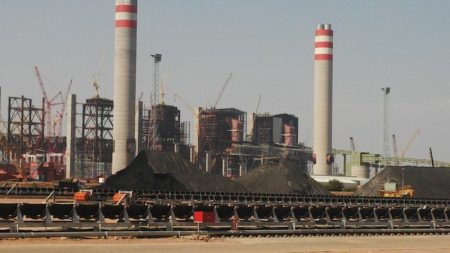August 13, 2018 – When Emily Folk, a previous guest contributor here at 21st Century Tech Blog, suggested a story about China and carbon emissions she submitted it to me with the title “China May Inhibit Developing Countries From Reducing Emissions.” I felt this was far too tame in expressing what is the current behaviour of China related to carbon emissions. It is one I would describe as duplicitous.
In my response to her submission at the time I wrote this:
There is another side to the China story, the “Belt and Road” initiative, where China will, in fact, export emissions by providing loans to the Developing World to build coal-fired thermal power plants, cement factories, and high emitting manufacturing plants with the assistance of Chinese labour, schematics and engineering expertise. The target countries are in Central and South Asia, and Subsaharan Africa. In a posting back in December of last year on Climate Home News, author Megan Darby wrote that China is the largest investor in coal plant construction globally with 240 of these projects on the go or to be built in India, Indonesia, Mongolia, Vietnam, and Turkey. Effectively, China is tripling its carbon emissions by exporting them to other parts of the globe while it builds up green energy projects in the homeland. Many other third-party sources corroborate Darby’s information although the Chinese-government media sources play this issue down.
Emily’s posting follows. As always your comments and feedback are welcome.
The latest meeting following up on the Paris climate accord took place in Bonn, Germany in May of this year. It many ways the conference appeared a step backward in advancing the global effort to combat anthropogenic climate change.
China at the time demonstrated in its presentations and speeches just how important it is to achieve global climate progress much to the displeasure of European Union countries in attendance.
Money Matters
At the meeting, China unexpectedly backed an argument made by the Developing World that they be given more leeway on emissions if they don’t receive the funding that the more heavily Developed World has promised. At Paris in 2015 the world’s wealthier nations promised to provide funds to less developed ones to help meet emission reduction goals. The pledge worked out to about $100 billion each year by 2020.
With the United States backing out of the Paris agreement and not providing financial or diplomatic support, pressure on the remaining wealthy nations to provide assistance, both financial and also in expertise, has intensified. The U.S. withdrawal also has shaken developing countries’ confidence in general about rich nations’ commitment to climate change progress. Because of this, the Developing World’s most vulnerable nations have called for more clarity and assurance that they will get the funds promised them. If they don’t, they say, they may not be able to meet their climate change goals.
Bifurcation
The term “bifurcation” has come up in climate change talks. It refers to the split in responsibilities between developed and developing countries. At a 1992 climate convention, the idea first emerged, one where wealthy nations would shoulder more responsibilities than poorer ones. Why? Because the wealthy nations got rich in the first place by industrializing and emitting large amounts of greenhouse gases. Hence it made sense to developing countries that the wealthy should bear greater responsibility for cleaning up the resulting mess. But many wealthy countries want a more equalized approach to solving climate issues to meet the Paris climate change agreement objectives. While rules haven’t been finalized, the Paris accord largely considered bifurcation to be an extreme position and that there wouldn’t be a “two-tiered” plan.
Recently, however, Developing World nation have been pushing for bifurcation with China a primary backer of this idea. At the next global meeting on climate change expect to see China and other nations to push harder in this direction. The European Union countries have said they won’t accept such an approach but will aim instead to provide as much financial support as possible.
It’s also plausible that China has another motive and doesn’t actually want bifurcation but instead is using it to leverage its economic and political goals.
Shifting Emissions
The latest research shows a disturbing trend. China is shifting its carbon emissions to nearby less developed countries like Bangladesh and Vietnam. China today increasingly imports clothing, food and other goods from these countries where there are stringent carbon and other greenhouse gas emissions rules. This has the effect of increasing these countries’ emissions and making it harder for them to meet climate goals while helping China to lower its domestic carbon emission targets. In many ways, this shift is to be expected. After all, the United States and European nations have long shifted manufacturing of the goods to China which they then import. They have done this because of labour cost savings, not primarily to reduce emissions. Now, China is doing the same thing with its low-labour cost neighbours.
Developing nations can’t be expected to stop trading with China in the name of reducing carbon emissions, as doing so could be critical to their development. Rather, these developing nations need support from wealthier ones so that they can develop in a greener way. With the right technologies, renewable energy sources, and green industrial processes in place, China’s neighbours may be able to increase wealth without the emissions the United States, the United Kingdom, and others have released throughout their period of industrialization.
The next climate summit will take place in Katowice, Poland where the parties to the Paris Climate Agreement are to finalize the rules by which most of the world, the United States excepted, will tackle climate change. Before that meeting China and the European Union plan to meet twice, hopefully, to get clarification on China’s policies which appear to be running counter to global carbon emission reductions despite the country’s domestic posturing.









